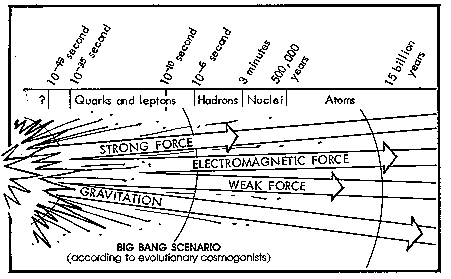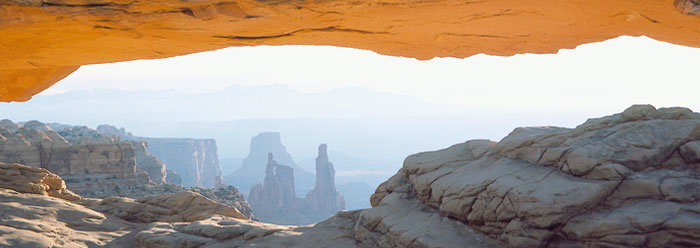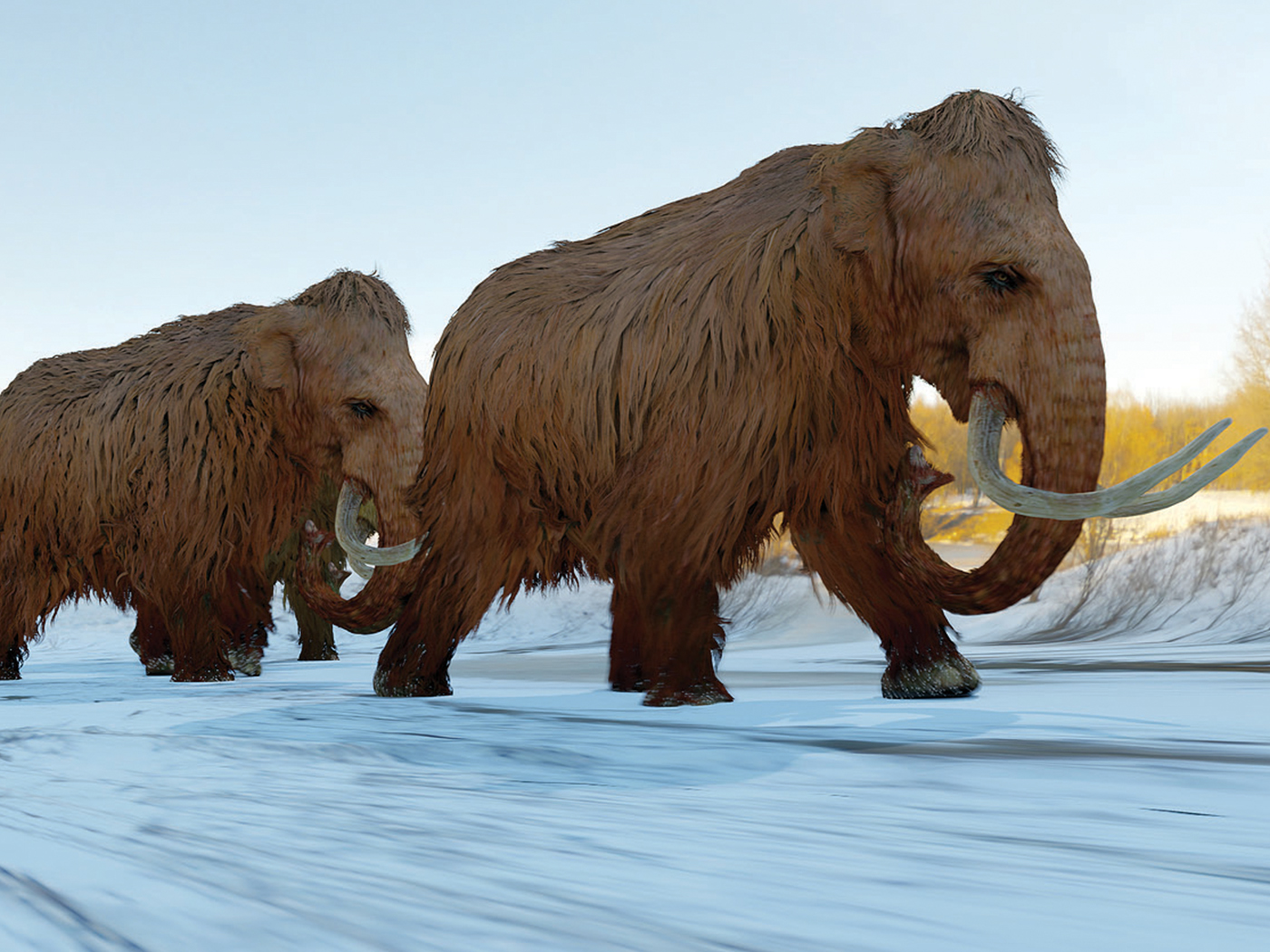These are exciting days in the field of physics. Superconductors
are in the news with the promise of new energy-efficient technology.
The Southern hemisphere supernova has given astronomers their
best look at a star explosion since 1694. One also hears about
supercomputers, superstrings of space material, and the superconducting
supercollider (SSC). Is the prefix "super" being overused
these days? Perhaps, but it accurately describes recent breakthroughs
in understanding the basics of matter and energy. Questions which
Einstein struggled with for the last 30 years of his life are
said to be finally near solution. This Impact article addresses
just one area of current interest--the search for a Grand Unified
Theory of matter.
A chief motive for progress in any field of science is the search
for order in nature. Patterns, predictive equations, and elegant
problem solutions are all part of this goal. In Newton's day,
the very existence of such order was seen as the fingerprint of
the Creator. Today's scientists still carry on the search for
patterns and design in matter. However, the driving force has
become unclear, and is often expressed mystically:
". . . following the instructions from our Greek heritage
(or inner voices), there have been attempts at . . . finding
some common, all-embracing law of physics out of which the apparently
different forces would arise.[1]
But for reasons largely aesthetic, physicists--who, like poets,
are driven by a blessed rage for order--believe that at some
deep level these seemingly separate forces are in fact the same.
They have an almost mystical faith in symmetry. [2]
The four distinct forces referred to in these quotes are gravity,
electromagnetism, weak force (part of nuclear decay), and strong
force (binding the nucleus together). Unification theories are
an attempt to combine these four forces into a single principle
or equation. Such a theoretical reduction of forces to the lowest
common denominator would truly be an impressive result, and the
challenge remains complex beyond description. Advanced areas of
mathematics such as tensor calculus and group theory are needed.
Even matter itself must be studied in abstract terms. Astrophysicists
speak of superstrings of mass energy in space. These cosmic strings
are invisible, massive, smaller than atoms, and exist theoretically
in nine different spatial dimensions! Computers aren't much help
in string theory, since no one yet knows the proper questions
to ask, let alone the answers. No one knows whether cosmic strings
will be verified, or instead be replaced by ideas even more complex.
For the creationist, such efforts to understand the universe should
be an encouragement. "The heavens declare the glory of God,"
including the integrity and intricacy of "His handiwork."
Particle accelerators have been used in high-energy physics since
the 1930s. Protons are given high speeds, and then are directed
against various targets of material. The resulting interactions
provide a probe of the microscopic world. In our day, large accelerators
are able to penetrate the atomic nucleus, and even to split individual
protons and neutrons. What results is a shower of more than 150
different "elementary" particles. They exhibit a bewildering
array of speeds, masses, charges, and lifetimes. Their names include
muons and neutrinos, pions and lambdas. No convenient periodic
table has yet been discovered to arrange these many new particles.
Instead, even higher energies are needed to study them. Thus the
construction of a new supercollider is planned by the U.S. This
circular instrument will cost billion, will be 17 miles in
diameter, and will give colliding protons an energy of 40 trillion
electron volts. It is hoped that this atom smasher may finally
reveal the fundamental constituents of matter. However, given
the hierarchy of ever deeper levels already seen within the atom,
one can predict that modern science will never reach the bottom-level
building blocks of nature. Instead, the inner layers of complexity
seem to continue without any limit. Of course, similar layers
of complexity are also observed in the heavens above. Such results
are to be expected from an infinite Creator.
A rough analogy exists between subatomic particles and the fossil
record. Both are thought to represent "lower level"
building blocks of our present world, and therefore they should
be simple and primitive in nature. However, the opposite has been
found. Fossils represent complex created life, and elementary
particles are definitely not elementary!

One consequence of giving a high energy to protons is to effectively
increase their temperature. In this way, physicists are attempting
to mimic, on a small scale, the energetic conditions at the earliest
moment of the big-bang scenario. Of course, this interpretation
is not essential to particle experiments, even though it gets
the most publicity. Instead, the discovered laws of the inner
atom reveal something of the complexity that came into being at
the instant of the supernatural creation. The creationist need
not oppose high-energy experiments, but on the contrary, can truly
enjoy the search for order. As with the stars above, the microscopic
details of God's handiwork are most appreciated by those who know
Him.
As the secular mind has struggled with the big-bang theory and
its uncertain startup, a novel idea has developed: The universe
could have begun from nothing! Instead of an ex nihilo
creation, however, reference is made to the entire universe arising
from a spontaneous quantum mechanical fluctuation in a preexisting
vacuum. In a future instant, we might all disappear again, with
another fluctuation! Secular origin theories certainly offer a
distinct lack of security for our well-being. The reader may judge
for himself whether cosmology is getting closer to the Genesis
account, or further away.
Some contemporary scientists have been influenced by apparent
parallels between modern physics and the Eastern religions--Hinduism,
Buddhism, and Taoism. This has led to some unusual science book
titles, such as The Tao of Physics (Capra, 1975) and The
Dancing Wu Li Masters (Zukav, 1979). One contributing factor
to this bizarre trend is the duality that exists in many science
areas. Some physical quantities seem to have a twin nature: the
wave-particle model of light; the equivalence of mass and energy,
space and time. Parallels are then drawn between the realms of
the spiritual and material worlds. All things are said to be mystically
connected, and able to change from one into the other. Mind and
matter, election and free will, heaven and hell--each pair supposedly
contains the seeds of the other, and are in reality the same.
A spiritual force is said to pervade every person, and can perhaps
be realized by meditation or reincarnation; thus men can become
gods, a belief which the New Age Movement predicts, but which
Genesis 3 strongly denies! Whatever all this heresy means, it
is a travesty to try to use the majestic physics of Einstein to
promote it.
One result of current unification theories is the prediction
that the proton--the most permanent particle known, should itself
eventually decay. Large detectors have been built to measure this
proton breakup, so far unsuccessfully. A creationist prediction
might be that the proton will indeed eventually show itself to
be unstable. This result would not necessarily support big-bang
cosmology, but rather, the relentless disordering process of the
entire universe.

Another prediction has already been expressed, that a lowest
possible level of matter, some ultimate building block, will never
be found. Whatever new subatomic particle is on the horizon, whether
a quark or a graviton, it will, in turn, await further dissection.
Science history demonstrates, and theology indicates, the inexhaustible
levels of complexity in nature. Jeremiah declared long ago that
man can never search out and completely understand material things
(Jeremiah 31:37). For the same reason, we cannot expect easy solutions
to current projects in creation research. However, the ICR staff
and graduate students have dedicated their work to the Lord's
glory, and are experiencing good progress in searching out the
riches of the Creation. It is in His light that we see light,
both spiritually and scientifically (Psalm 36:9).
REFERENCES
[1] Lederman, L. 1986. "1986 Richtmyer
Lecture" American Journal of Physics 54 (7) p. 594.
[2] Merrit, J. I. 1986. Toward a
Theory of Everything. Princeton Alt.
* Dr. DeYoung (Ph.D., Iowa State University) is Professor
of Physics at Grace College Winona Lake, Indiana, as well as
Adjunct Professor of Astrophysics at the ICR Graduate School.













